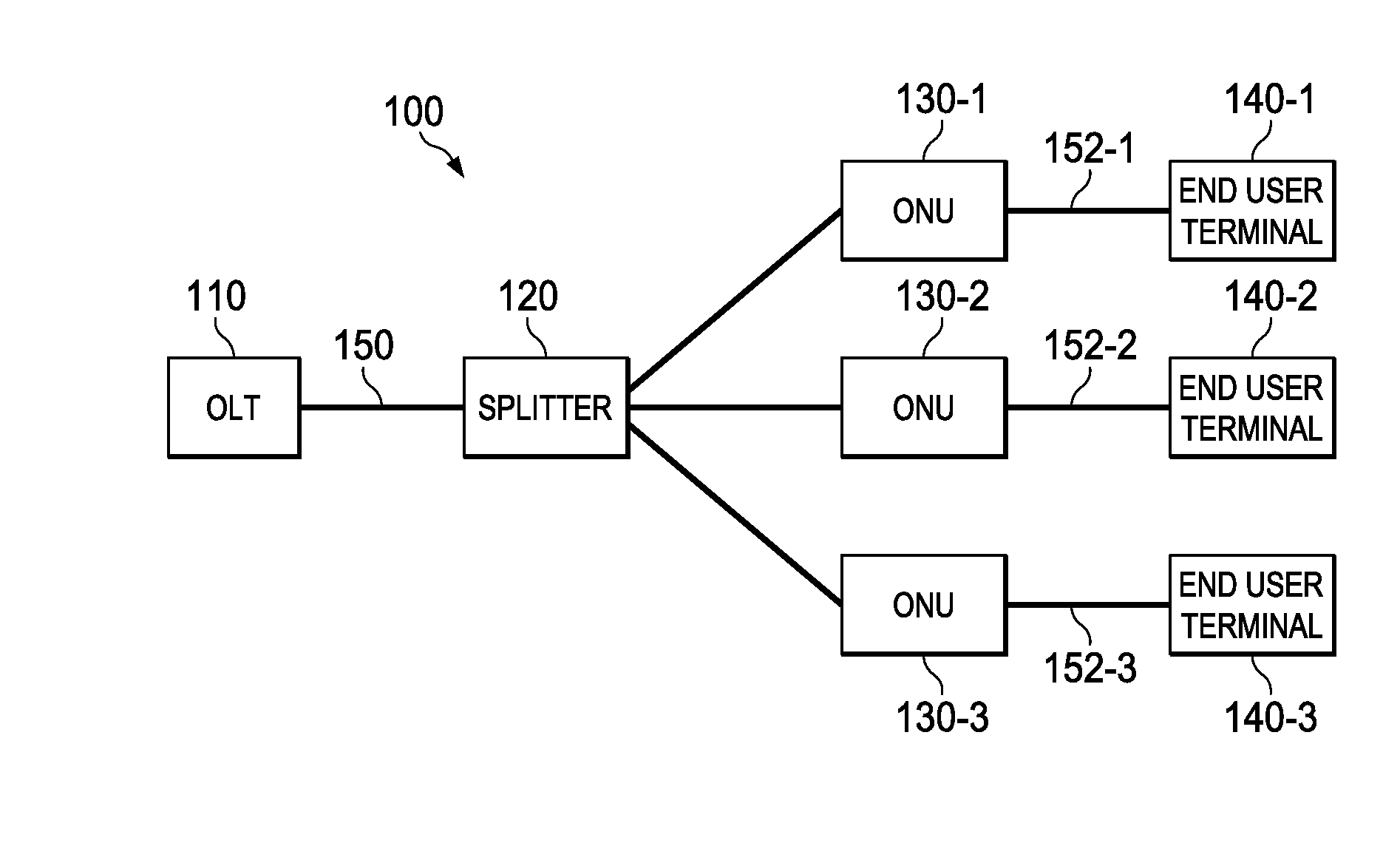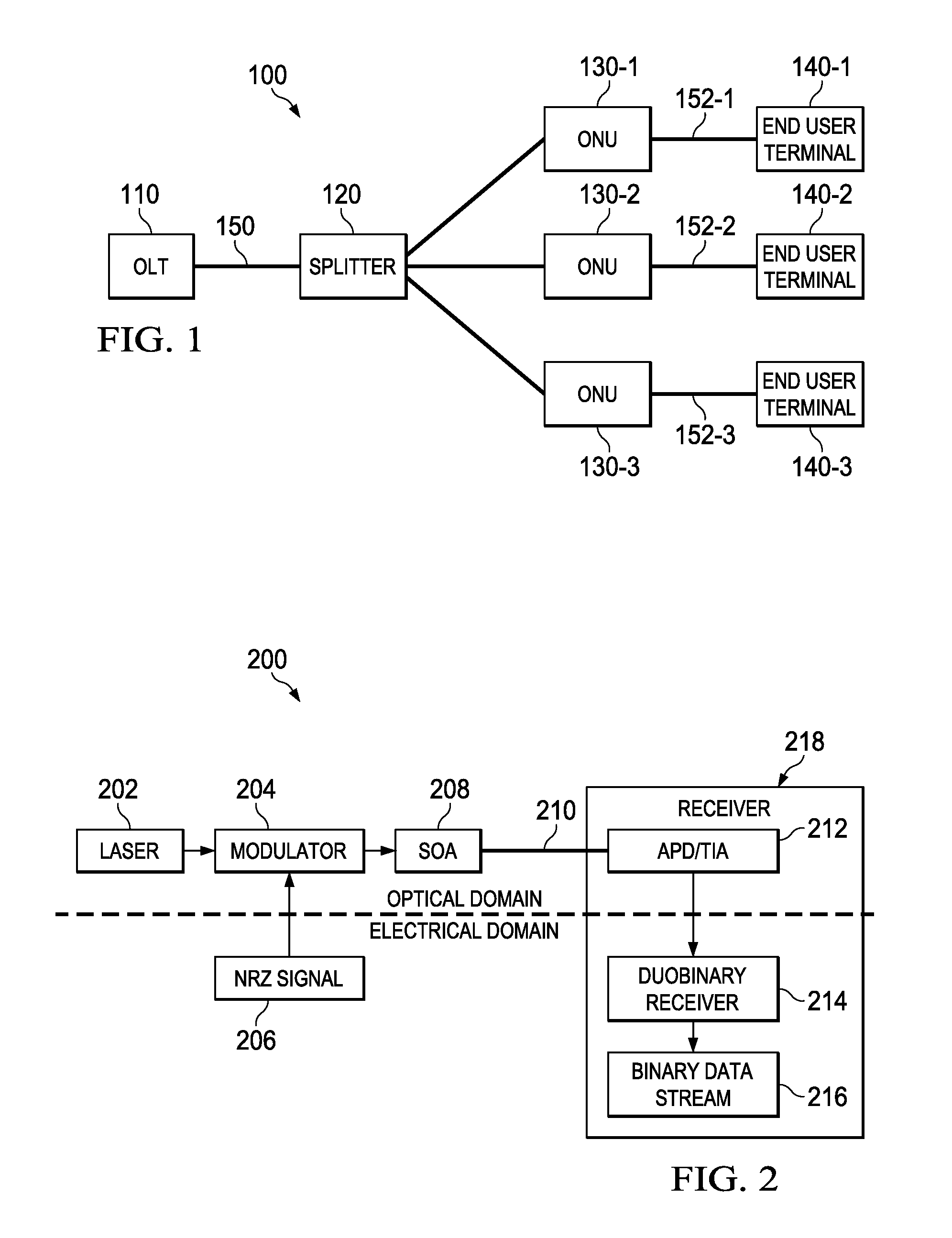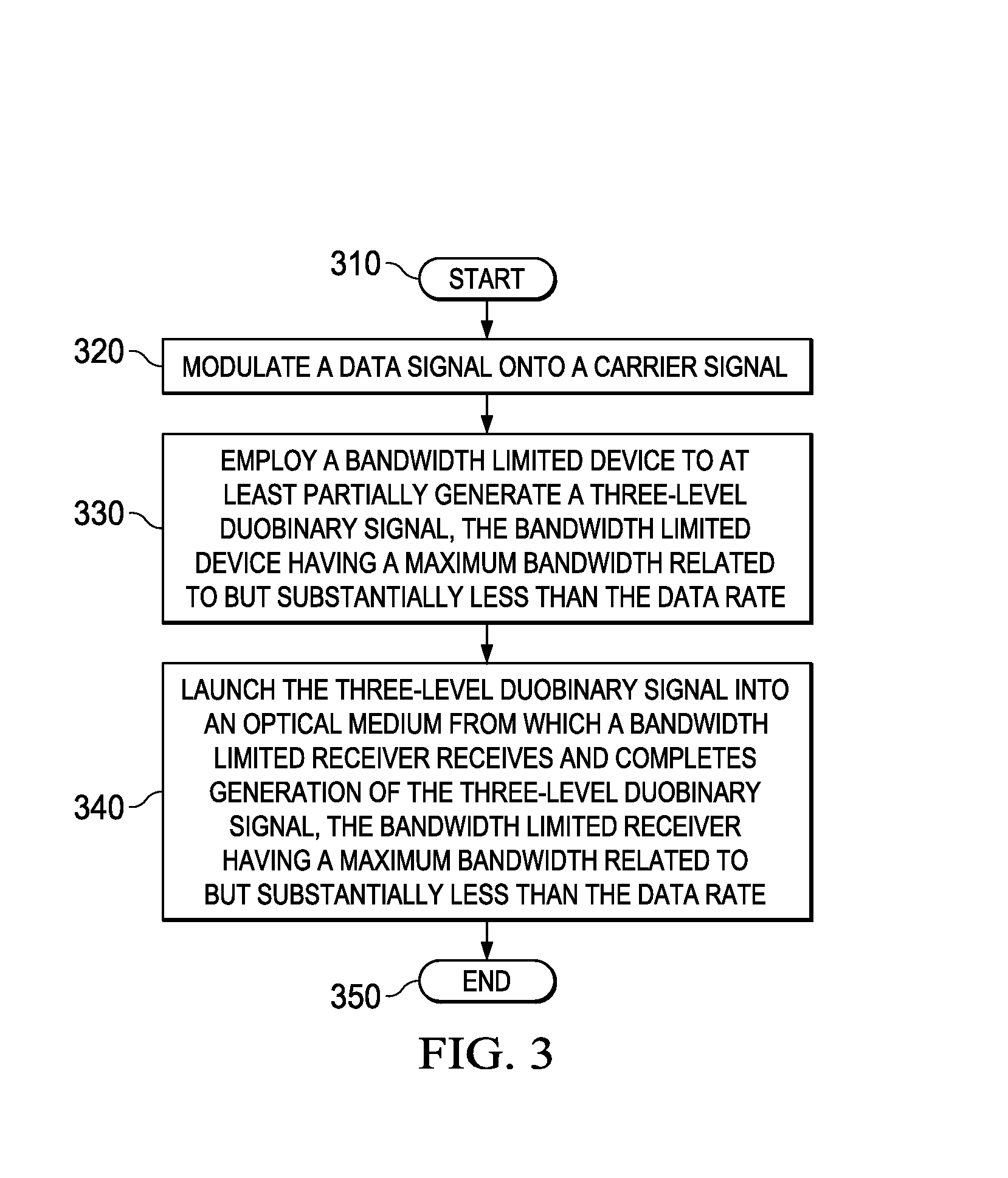Optical network device employing three-level duobinary modulation and method of use thereof
- Summary
- Abstract
- Description
- Claims
- Application Information
AI Technical Summary
Benefits of technology
Problems solved by technology
Method used
Image
Examples
Embodiment Construction
[0013]A conventional optical network includes an optical line terminal (OLT) on the service provider's end (upstream) and multiple optical network units (ONUs) near the end users (downstream). Bandwidth demands in most optical access networks are asymmetric, meaning there is a greater demand for bandwidth in one direction than in the opposite. Bandwidth demand for data flowing downstream, toward the ONUs, tends to be greater than the bandwidth demand for upstream data flow, toward the OLT. There are several avenues for increasing the downstream data rates of optical networks, including higher performance components upstream and down, increasing the order of the modulation format or using multiple wavelengths.
[0014]When optical networks step up bandwidth and data rate capacity, they potentially expose themselves to additional noise and chromatic dispersion, which lead to bit errors. These issues are often overcome by utilizing higher order modulation schemes and data encoding, and li...
PUM
 Login to View More
Login to View More Abstract
Description
Claims
Application Information
 Login to View More
Login to View More - R&D
- Intellectual Property
- Life Sciences
- Materials
- Tech Scout
- Unparalleled Data Quality
- Higher Quality Content
- 60% Fewer Hallucinations
Browse by: Latest US Patents, China's latest patents, Technical Efficacy Thesaurus, Application Domain, Technology Topic, Popular Technical Reports.
© 2025 PatSnap. All rights reserved.Legal|Privacy policy|Modern Slavery Act Transparency Statement|Sitemap|About US| Contact US: help@patsnap.com



